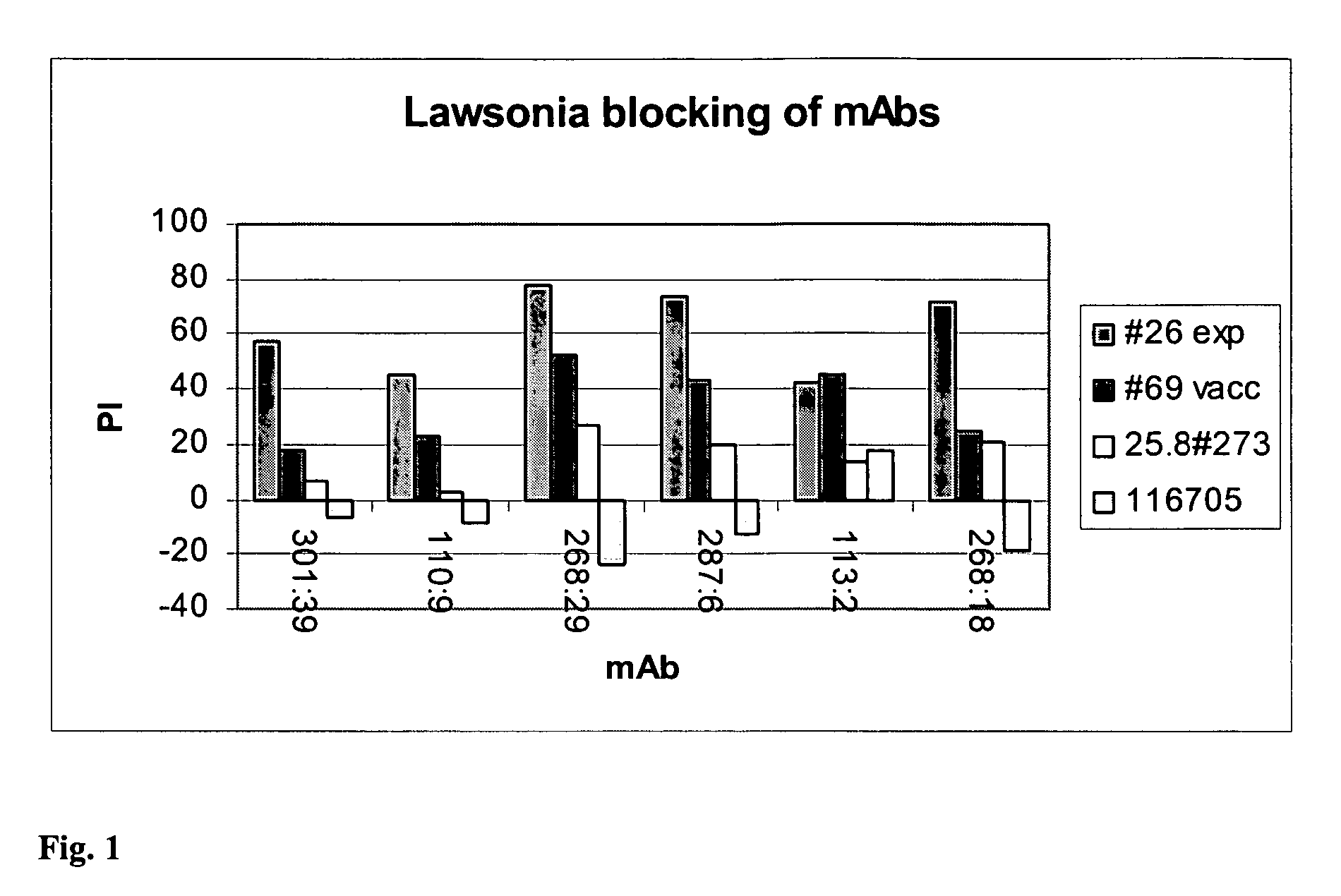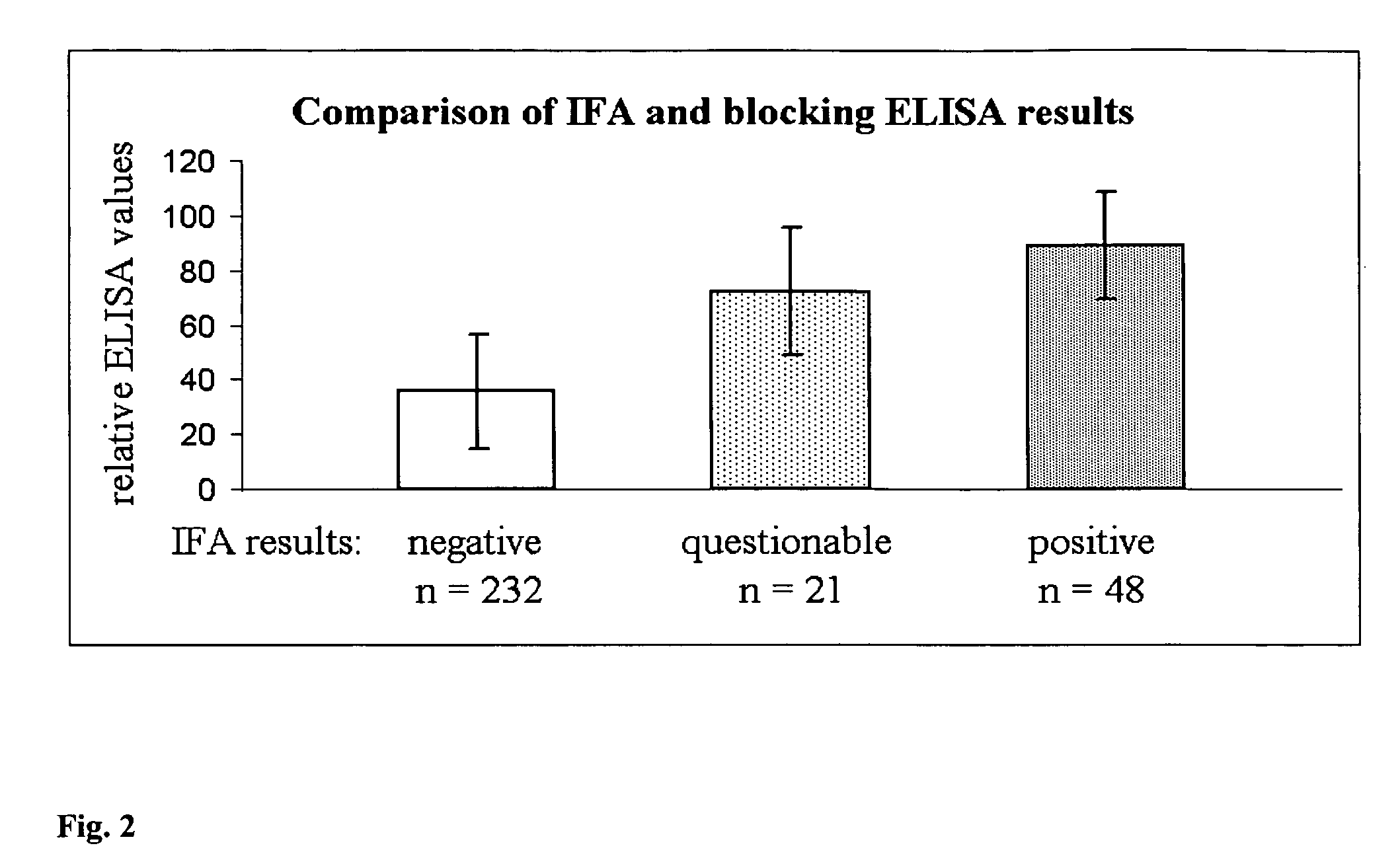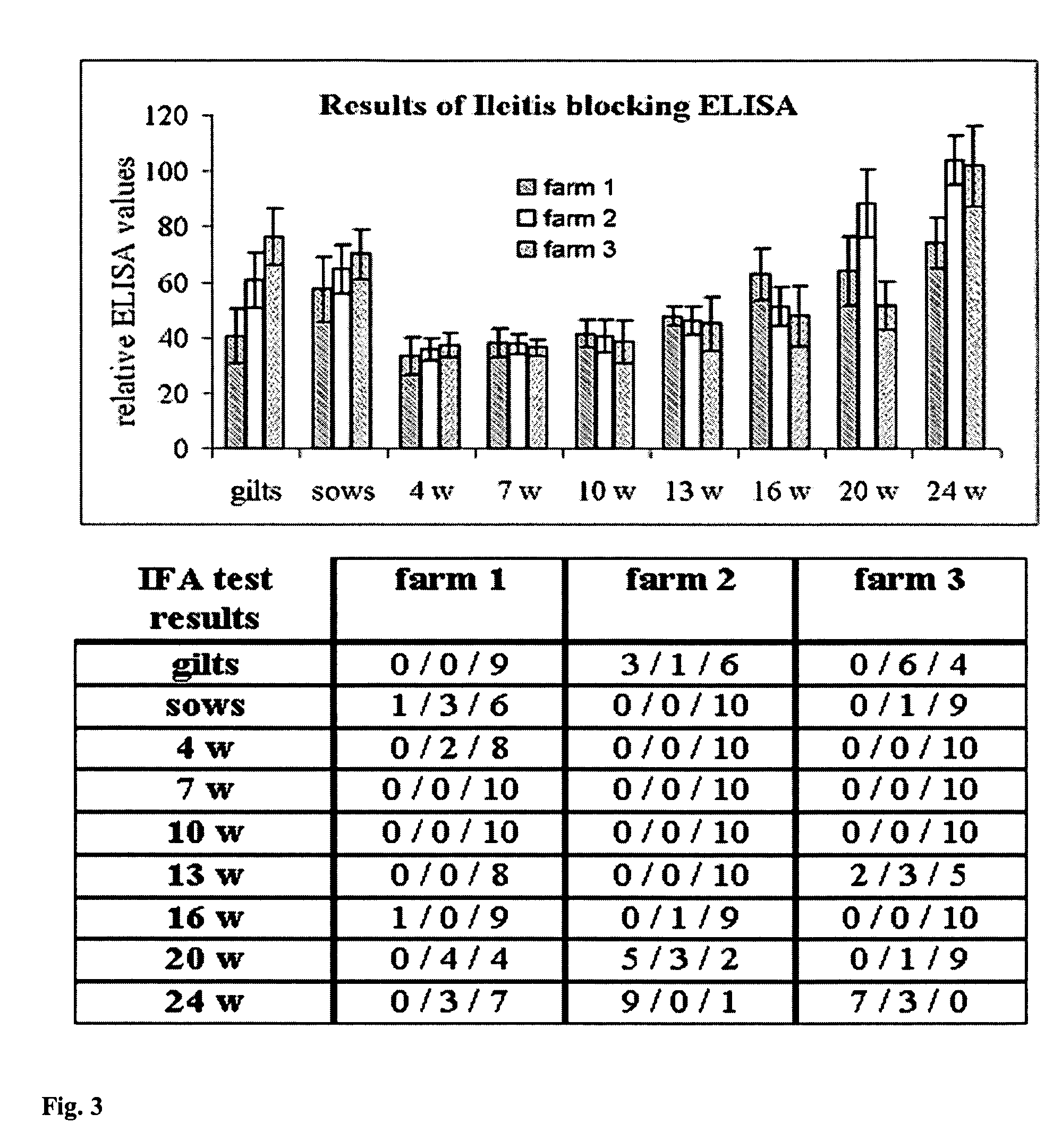Method of detecting Lawsonia intracellularis antibodies
a technology of intracellularis and antibodies, applied in the field of animal health, can solve the problems of inconvenient large-scale screening, laborious and time-consuming methods, and a particularly great cause of loss in swine herds
- Summary
- Abstract
- Description
- Claims
- Application Information
AI Technical Summary
Benefits of technology
Problems solved by technology
Method used
Image
Examples
example 1
1.0 Material
[0119]anti-Lawsonia hybridomal celline: 372:13, 113:2, 268:18, 287:6, 110:9, 268:29, 301:39.[0120]Equipment and media for hybridomal cell cultivation.[0121]Equipment and buffers for purification and HRP conjugation of monoclonal antibodies (mAb).[0122]Equipment and solutions for ELISA[0123]Lawsonia antigen SF 1289 N343 Dec. 20, 2000[0124]Lawsonia positive sera: lot#052902pig#26 (experimentally infected), lot#052902pig#69 (vaccinate)[0125]Lawsonia negative sera: p 25.8#273 Day 52 Jun. 30, 1995, 116705
1.1 Methods
[0126]The preparation of the monoclonal antibodies was performed according to standard operating procedures at Svanova Biotech.
1.1.1 Culturing of Hybridomal Cells and Preparation of HRP Conjugated Monoclonal Antibodies
[0127]To secure the hybridomal cell-lines 15 vials of each cell line was prepared and stored in −135° C.[0128]One vial of each hybridomal cell-line was thawed and the cells were grown in cell-culture flasks.[0129]500 ml to 1000 ml of supernatant from ...
example 2
2.0 Summary
[0143]Development and establishment of a sandwich b-ELISA prototype for the detection of antibodies to Lawsonia intracellularis:
[0144]After calculation of sensitivity and specificity by using immunoflourescence test IFA as gold standard the following can be concluded:[0145]Capture mAb 110:9 gives a clear distinction between positive and negative samples.[0146]Detection mAb 268:29 HRP gives a clear distinction between positive and negative sera showing a sensitivity and specificity of 100%.[0147]It is recommended that the prototype will be as follows:[0148]mAb 110:9 as capture mAb, coated in Nunc maxi-sorp strips C-8[0149]Antigen (Ag): Lawsonia intracellularis culture (preferably the concentrated material produced in R&D at BI)[0150]Serum samples diluted 1 / 10 in 0.5M NaCl / PBST. Incubation for 1 hour at 37 C.[0151]HRP conjugated mAb 268:29, lyophlized in CDS-C buffer containing 0.5M NaCl. Incubation for 1 hour at 37 C.[0152]Substrate K-Blue Max, incubation for 10 minutes a...
example 3
3.1 Summary
[0196]The performed accelerated stability studies indicate that the Lawsonia intracellularis antigen captured ELISA plate has a stability of at least one year and that the a-Lawsonia HRP conjugate 268:29 has a stability of 6 to 12 months in a lyophilized form.
3.2 Introduction
[0197]In order to estimate the stability of the components of a future Lawsonia intracellularis ELISA kit accelerated stability tests has to be performed. The component to be tested is stored at 37 C for 4 weeks and is thereafter tested in the ELISA in comparison with a component kept at 4 C. 4 weeks stability in 37 C indicates a shelf-life of about 12 months. This report describes accelerated stability studies performed on the antigen captured ELISA plate and on the HRP conjugate.
3.3 Materials and Methods
Accelerated Stability on Plates (ELISA 031024)
[0198]Plates were coated with Lawsonia mAb 110:9 blocked with 10% Sucrose / 10% Normal Horse serum in ddH2O and incubated with Lawsonia antigen. Plates wer...
PUM
| Property | Measurement | Unit |
|---|---|---|
| temperature | aaaaa | aaaaa |
| temperature | aaaaa | aaaaa |
| temperature | aaaaa | aaaaa |
Abstract
Description
Claims
Application Information
 Login to View More
Login to View More - R&D
- Intellectual Property
- Life Sciences
- Materials
- Tech Scout
- Unparalleled Data Quality
- Higher Quality Content
- 60% Fewer Hallucinations
Browse by: Latest US Patents, China's latest patents, Technical Efficacy Thesaurus, Application Domain, Technology Topic, Popular Technical Reports.
© 2025 PatSnap. All rights reserved.Legal|Privacy policy|Modern Slavery Act Transparency Statement|Sitemap|About US| Contact US: help@patsnap.com



